Tristar BD-4611 Handleiding
Tristar
Bloeddrukmeter
BD-4611
Bekijk gratis de handleiding van Tristar BD-4611 (3 pagina’s), behorend tot de categorie Bloeddrukmeter. Deze gids werd als nuttig beoordeeld door 41 mensen en kreeg gemiddeld 4.5 sterren uit 21 reviews. Heb je een vraag over Tristar BD-4611 of wil je andere gebruikers van dit product iets vragen? Stel een vraag
Pagina 1/3

1
EN | Instruction manual
PT | Manual de utilizador
B
D
-
4
6
1
1
PARTS DESCRIPTION / DESCRIÇÃO DOS COMPONENTES
DISPLAY
1
2
3
1
2
4
7
8
9
10
6
5
3
4
5
6
WWW.TRISTAR.EU
Tristar Europe B.V. | Jules Verneweg 87
5015 BH Tilburg | The Netherlands
ENInstruction manual
SAFETY
MEDICAL DISCLAIMER: This device and manual are not meant
to be a substitute for advice provided by doctors or other
medical professionals.
Contact your physician for interpretation of measurements, or if
you have or suspect you have a medical issue.
• By ignoring the safety instructions the
manufacturer can not be hold
responsible for the damage.
• Not for use by children, pregnant women,
or pre-eclamptic patients.
• Prolonged over-inflation of the monitor
will result in harmful injury to the patient.
• Do not use this device over a wound, as
this can cause further injury.
• Too frequent measurements can cause
injury due to blood flow interference.
• Do not attempt to modify this device in
any way.
• Never move the appliance by pulling the
cord and make sure the cord can not
become entangled.
• The appliance must be placed on a
stable, level surface.
• This product is for household use only. It
is not intended as a substitute for
consultation with your doctor.
• For users diagnosed with common
arrhythmia (atrial or ventricular
premature beats or atrial fibrillation),
diabetes, poor circulation of blood,
kidney problems, or for users suffered
from stroke, or for unconscious users,
the device might not be suitable for use.
Consult your doctor in case of any doubt.
• The unit should not be operated by
children to avoid hazardous situations.
• The unit contains high-precision
assemblies. Therefore, avoid extreme
temperatures, humidity and direct
sunlight. Avoid dropping or strongly
shocking the main unit, and protect it
from dust.
• Leaking batteries can damage the unit.
Remove the batteries when the unit is
not used for a long time.
• If the unit is stored in a cold place, allow
it to acclimatize at room temperature
before use.
• To avoid inaccurate results caused by
electromagnetic interference between
electrical and electronic equipment’s, do
not use the device near a cell phone or
microwave oven.
• To protect yourself against an electric
shock, do not immerse the cord, plug or
appliance in the water or any other liquid.
• This appliance shall not be used by
children. This appliance can be used by
persons with reduced physical, sensory
or mental capabilities or lack of
experience and knowledge if they have
been given supervision or instruction
concerning use of the appliance in a safe
way and understand the hazards
involved. Children shall not play with the
appliance. Keep the appliance and its
cord out of reach of children. Cleaning
and user maintenance shall not be made
by children.
SAFETY BATTERIES
• Do not expose the battery to high
temperatures or direct sunlight. Never
throw batteries into the fire. There is a
danger of explosion!
• Keep batteries away from children.
Batteries are not a toy!
• Do not open the batteries by force.
• Avoid contact with metallic objects.
(Rings, nails, screws et cetera) there is a
danger of short-circuiting!
• As a result of a short-circuit batteries
may heat up consider-ably or even catch
fire. this may result in burns.
• For your safety the battery poles should
be covered with adhesive strips during
transport.
• Do not touch a ruptured and/or leaking
battery. If the liquid from the battery gets
into your eyes, rinse your eyes as soon
as possible with clean water, without
rubbing your eyes. Immediately go to the
hospital. If it is not treated properly, it can
cause eye problems.
BLOOD PRESSURE
What is blood pressure?
Blood pressure is the pressure exerted on the artery tube while
blood flows through the arteries. The pressure measured when
the heart contracts and sends blood out of the heart is systolic
(highest). The pressure measured when the heart dilates with
blood flowing back into the heart is called diastolic (lowest)
blood pressure.
Why measure your blood pressure?
Among the various health problems afflicting modern people,
problems associated with high blood pressure are by far the
most common. High blood pressure's dangerously strong
correlation with cardiovascular diseases and high morbidity has
made measuring blood pressures a necessity of identifying
those at risk.
Blood pressure standard.
The World Health Organization (WHO) and National High Blood
Pressure Education Program has developed a Blood pressure
standard, according to which areas of low and high-risk blood
pressure are identified. This standard however, is a general
guideline as individual's blood pressure varies among different
people and different groups...etc.
It is important that you consult your physician regularly. Your
physician will tell you your normal blood pressure range as well
as the point at which you will be considered at risk.
Blood pressure fluctuation
Blood pressure fluctuates all the time!
You should not be worried if you encountered two or three
measurements at high levels.
Blood pressure changes over the month and even throughout
the day depending on circumstances (state of mind,
temperature, ...)
Blood pressure measurements determined with this device are
equivalent to those obtained by a trained observer using the
cuff/ stethoscope auscultatory method, within the limits
prescribed by European Society of Hypertension International
Protocol revision 2010 for the validation of blood pressure
measuring devices in adults.
An irregular heartbeat (IHB) rhythm is defined as a rhythm that
is more than 25% slower or 25% faster from the average rhythm
detected while the device is measuring the systolic blood
pressure and the diastolic blood pressure. When the device
detects an irregular rhythm two or more times during the
measurement, the Irregular Heartbeat Symbol will be displayed
with the measurement values.
PARTS DESCRIPTION
1. Display
2. USB power supply port
3. Memory button
4. Start/stop button
5. Set button
6. Cuff
Display
1. Systolic pressure
2. Diastolic pressure
3. Average value unit indicator
4. Pulse rate
5. Heartbeat
6. IHB
7. Memory times Year/date/time
8. User number
9. Blood pressure classification
10. Low battery
BEFORE THE FIRST USE
• Take the appliance andaccessoriesoutthebox.Removethe
stickers,protective foilorplasticfrom thedevice.
Battery Installation:
1. Take off the battery cover, located on the back of the device.
2. Insert three AA alkaline batteries according to the + and –
markings.
3. Snap the battery cover on, ensuring it clicks into place.
Make sure that the battery cover is securely in position.
4. NOTE: When the low battery symbol appears on screen,
turn off the device and follow the instructions above to
replace batteries.
Setting user, year, date and time:
• With device turned off, press and hold “set” button until
flashing year digits occur.
• Press “mem” to increase one year, or press and hold “mem” to
increase years. Press “set” to confirm and then flashing month
digits occur.
• Press “mem” to increase one month, or press and hold “mem”
to increase months. Press “set” to confirm and then flashing
day digits occur.
• Press “mem” to increase one day or press and hold “mem” to
increase days. Press “set” to confirm and then flashing hour
digits occur.
• Press “mem” to increase one hour or press and hold “mem” to
increase hours. Press “set” to confirm and then flashing minute
digits occur.
• Press “mem” to increase one minute or press and hold “mem”
to increase minutes. Press “set” to confirm and then either “12”
digits occur for 12-hour system or “24” digits occur for 24-hour
system.
• Press “mem” to toggle between “12” for 12-hour system and
“24” for 24-hour system. Press “set” to confirm and then
pressure unit digits occur.
• Press “mem” to toggle between “mmHg” and “kPa”. Press “set”
to confirm and flashing year occur again, or press “start/stop”
to confirm and then the device turns off.
• Setting is completed.
Note: Pressing “start/stop” will confirm the setting and then the
device turns off at any time.
Setting the user
With device turned off, press and release “set” button to show
the current user. Press “set” button to toggle between User 1
and User 2. To select user, press “start/stop” to confirm and
then the device turns off.
USE
Before Taking a Measurement
• For most accurate results, measurements should be taken in
the same circumstances and at the same time every day.
• This device can be applied to either arm, but preferably the
left. Use the same arm for each measurement.
• Any blood pressure recording can be affected by the position
and physiological condition of the subject, as well as other
factors such as background noise, stress, talking and body
movement etc.
• Avoid taking measurements while under stress.
• Do not eat, drink alcohol, smoke, exercise, or bathe 30
minutes before using this device, as these activities may
change blood pressure.
• For an accurate indication of true blood pressure, take and
record several measurements over a period of time.
• If consecutive measurements are desired, allow two minutes
between uses to allow blood to flow through the arm normally.
• This device is used to monitor blood pressure. However, it
cannot treat or prevent high blood pressure. If you suffer from
high blood pressure, consult your doctor. Self-diagnosis and
treatment using readings may be dangerous. Follow the
instructions of your physician or licensed healthcare provider.
Measurement
• This device should be used on bare skin. If necessary, loosely
roll up your sleeve to expose the arm. Note that your arm
cannot be tightened by your sleeve.
• With the hose down the inside of your arm and the bottom of
the cuff approx. 1~2cm above your elbow, wrap the cuff
around your arm. Secure the cuff with a finger space between
the cuff and your arm by attaching hook-and-loop fastener.
• Comfortably seated, legs uncrossed, feet flat on the floor, back
and arm supported, relax as much as possible and do not talk
during the measurement.
• While sitting upright in a chair with your feet flat on the floor,
press “start/stop". Symbols on screen will flash and cuff will
begin to inflate. Do not move, activate arm muscles, or talk
during measurement.
• Measurement can be stopped at any time by pressing “start/
stop".
• When this device senses a pulse, a heart symbol will flash on
screen.
• When measurement is complete, the cuff deflates
automatically and your systolic pressure, diastolic pressure,
and pulse rate will display on screen.
• Turn off this device by pressing “start/stop", remove from your
arm by detaching hook-and-loop fasteners. If this device is
accidentally left on, it will turn itself off after two minutes.
NOTE: This device will remain set on the same user after you
turn it off. To change to the other user, turn this device off, then
press and release “set” to access user setting. Either the user 1
or user 2 icon will appear. Press “set” to switch to the other user
icon and press “start/stop” to confirm the user and then the
device turns off.
Using Memory-Recall
This device will store up to 90 measurements each for two
users. When more than 90 measurements are taken, the oldest
measurement will be replaced.
• To access memory-recall, press and release “mem” while the
device is off.
• First, it will display the average of your three most recent
measurements, indicated on screen as M AVG (measurement
average).
• Press “mem” again to see the most recent measurement.
Press “mem” repeatedly to scroll towards the oldest
measurement. On screen, M01 indicates the most recent
measurement, with higher M numbers indicating older
measurements.
• If you desire to delete all stored measurements, press and
hold “set” under the Memory-recall status until “dEL no” is
displayed with “no” flashing. Press and release “set” to switch
to “dEL yes” with “yes” flashing.
• Press “start/stop” with “dEL yes” to confirm clearing the
memory and then blank entry appears on screen, or press
“start/stop” with “dEL no” to go back to the memory-recall
status without clearing the memory.
• Press “start/stop” to exit.
TROUBLESHOOTING
Trouble Possible reasons Solution

Err Error during
inflation. Adjust cuff,
ensuring it is
wrapped properly,
and repeat
measurement. Do
not move or talk
during
measurement.
Ensure wrist is level
with heart.
Lo Low battery. Replace batteries
following
instructions in the
Battery installation
section.
No Power Low batteries or
incorrect battery
placement.
Ensure batteries
were installed
according to the +
and - shown on this
device. If they were,
batteries need
replacement.
Measurement Too
High / Too Low
Possible incorrect
use of this device. Adjust cuff,
ensuring it is
wrapped properly,
and repeat
measurement.
CALIBRATION AND SERVICE
The accuracy of this blood pressure monitor has been carefully
tested and is designed for a long service life. It is generally
recommended to have this device inspected and calibrated
every two years to ensure correct functioning and accuracy.
Please consult you authorized distributor.
CLEANING AND MAINTENANCE
• For regular maintenance, this device only needs to be wiped
gently with a soft, dry cloth. Never immerse this device or any
components in water.
• Do not carry out repairs of any kind yourself. If a defect
occurs, please contact your local authorized distributor. Use
only authorized parts and accessories.
EMC DECLARATION
Guidance and Manufacturer’s Declaration - Electromagnetic
Immunity, this device is intended for use in the electromagnetic
environment specified below. The customer or the user of this
device should ensure that it is used in such an environment.
Immunity Test Complianc
eElectromagnetic Environment -
Guidance
RF emissions
CISPR 11 Group 1 This device uses RF energy only
for its internal function.
Therefore, its RF emissions are
very low and are not likely to
cause any interference in nearby
electronic equipment.
RF emissions
CISPR 11 Class B This device is suitable for use in
all establishments other than
domestic and those directly
connected to the public low
voltage power supply network
that supplies buildings used for
domestic purposes.
Harmonic
emissions IEC
61000-3-2
Not
applicable
Voltage
fluctuations/
Flicker
emissions IEC
61000-3-3
Not
applicable
Immunity Test IEC
60601Test
Level
Complia
nce
Level
Electromagnetic
Environment -
Guidance
Electrostatic
discharge
(ESD)IEC
61000-4-2
± 8 kV
contact
± 2 kV,
± 4 kV,
± 8 kV,
± 15 kV air
± 8 kV
contact
± 2 kV,
± 4 kV,
± 8 kV,
± 15 kV
air
Floors should be wood,
concrete, or ceramic
tile. If floors are
covered with synthetic
material, the relative
humidity should be at
least 30%
Power
frequency(50
Hz/60Hz)mag
netic field IEC
61000-4-8
30 A/m 30 A/m Magnetic fields from
common appliances
are not expected to
affect the device.
NOTE: UT is the a.c. mains voltage prior to application of the
test level
Radiated
RFIEC
61000-4-3
10V/m
80MHz to
2.7GHz
9V/m,
27V/m,
28V/m
385-5785
MHz
10V/m
80MHz
to
2.7GHz
9V/m,
27V/m,
28V/m
385-578
5
MHz
Portable RF
communications
equipment (including
peripherals such as
antenna cables and
external antennas)
should be used no
closer than 30 cm (12
inches)to any part of
this device, including
cables specified by the
manufacturer.
Otherwise, degradation
of the performance of
this equipment could
result.
SPECIFICATIONS
1 Model BD-4611
2 Measurement
Method Oscillometric
3 Display LCD
4 Measurement
Range Pressure: 0 to 299 mmHg
Pulse: 40 to 180 beats/minute
5 Accuracy Pressure: Within ± 3 mmHg
Pulse Rate: Within ± 5% of reading
6 Inflation Automatic inflation by pump
7 Deflation Automatic rapid deflation
8 Pressure Detection Semiconductor pressure sensor
9 Memory 2 persons X 90 measurements each
1
0Power Supply 3 AA alkaline batteries (not included)
1
1Battery Life About 6 months when used once a
day
1
2Operating
Environment Temperat
ure 10°C (50°F) to 40°C
( 104°F)
Humidity 15% to 90%
(noncondensing)
Barometri
c
Pressure
105 kPa to 80 kPa (790
mmHg to 600 mmHg)
1
3Transport
Storage
Environment
Temperat
ure -20°C (-4°F) to 55°C
( 131°F)
Humidity 0% to 95%
(noncondensing)
1
4Weight of Main Unit Approximately 115 g (not including
batteries)
1
5External
Dimensions 103 mm (H) X 77.5 mm (W) X 40.8
mm (D)
1
6Measurable
Circumference of
Wrist
Approximately 22cm ~ 36 cm)
1
7Electric Shock
Protection Internal power supply appliance type
BF
Symbols Use
SYMBOLS USED IN THIS INSTRUCTION MANUAL
Type BF applied part
The marking of electrical and electronics
devices according to Directive 2012/19/EU.
The device, accessories and the packaging
have to be disposed of waste correctly at the
end of the usage.
ENVIRONMENT
This appliance should not be put into the domestic
garbage at the end of its durability, but must be offered at a
central point for the recycling of electric and electronic
domestic appliances. This symbol on the appliance, instruction
manual and packaging puts your attention to this important
issue. The materials used in this appliance can be recycled. By
recycling of used domestic appliances you contribute an
important push to the protection of our environment. Ask your
local authorities for information regarding the point of
recollection.
BATTERIES
The European directive for batteries (2006/66/EC) states that it
is not permitted to throw batteries away with the household
waste. They may contain substances which are harmful to the
environment. Empty batteries can be handed over to a local,
public collection point or a local recycling centre. To avoid
overheating as a result of a short circuit, lithium batteries must
be removed from the product and the poles must be protected
using insulation tape or some other means against short-
circuiting.
PTManual de Instruções
SEGURANÇA
DECLARAÇÃO DE EXONERAÇÃO DE RESPONSABILIDADE
MÉDICA Este aparelho e respetivo manual não substituem o
conselho de um médico ou outro profissional de saúde.
Contacte o seu médico para interpretar os valores das
medições ou se tem ou suspeita ter um problema médico.
• Se não seguir as instruções de
segurança, o fabricante não pode ser
considerado responsável pelo danos.
• Não se destina a ser usado por
crianças, mulheres grávidas ou doentes
com pré-eclampsia.
• Uma insuflação excessiva prolongada
do monitor resultará na lesão do doente.
• Não use este aparelho sobre uma
ferida, pois pode agravar a lesão.
• Medições demasiado frequentes podem
provocar lesões devido à interferência
sobre o fluxo sanguíneo.
• Não tente modificar de forma alguma
este aparelho.
• Nunca desloque o aparelho puxando
pelo cabo e certifique-se de que este
nunca fica preso.
• O aparelho deve ser colocado numa
superfície plana e estável.
• Este produto destina-se apenas a uso
doméstico. Não se destina a substituir a
consulta do seu médico.
• O aparelho poderá não ser adequado
para utilizadores diagnosticados com
arritmia comum (batimentos atriais ou
ventriculares prematuros ou fibrilação
atrial), diabetes, má circulação
sanguínea, problemas renais ou para
utilizadores que tenham sofrido um AVC
ou que se encontrem inconscientes. Em
caso de dúvida, consulte o seu médico.
• A unidade não deve ser manuseada por
crianças para evitar situações
perigosas.
• A unidade contém módulos de alta
precisão. Por este motivo, evite expô-la
a temperaturas extremas, humidade e
radiação solar direta. Evite a queda ou
pancadas fortes na unidade principal e
proteja-a do pó.
• As baterias com derrame podem
danificar a unidade. Remova as baterias
se a unidade não for utilizada durante
um longo período.
• Se guardar a unidade num local frio,
deixe-a aclimatizar-se à temperatura
ambiente antes de usar.
• Para evitar resultados incorretos
provocados pela interferência
eletromagnética entre equipamento
elétrico e eletrónico, não use o aparelho
próximo de um telemóvel ou de um
forno microondas.
• Para se proteger contra choques
elétricos, não mergulhe o cabo, a ficha
nem o aparelho em água ou qualquer
outro líquido.
• Este aparelho não deve ser usado por
crianças. Este aparelho pode ser
utilizado por pessoas com capacidade
física, sensorial ou mental reduzida ou
com falta de experiência e
conhecimento, se forem
supervisionadas ou tiverem recebido
instruções relativas à utilização do
aparelho de forma segura e
compreenderem os riscos envolvidos.
As crianças não devem brincar com o
aparelho. Mantenha o aparelho e o
respetivo cabo de alimentação fora do
alcance das crianças. A limpeza e
manutenção não devem ser efetuadas
por crianças.
SEGURANÇA DAS PILHAS
• Não exponha a pilha a temperaturas
elevadas ou luz solar direta. Nunca atire
as pilhas para uma fogueira. Existe
perigo de explosão!
• Mantenha as pilhas afastadas das
crianças. As pilhas não são brinquedos!
• Não abra as pilhas à força.
• Evite o contacto com objetos metálicos
(anéis, pregos, parafusos etc.); existe o
perigo de curto-circuito!
• Em resultado de um curto-circuito, as
pilhas podem aquecer
consideravelmente ou mesmo incendiar.
Isto poderá resultar em queimaduras.
• Para sua segurança, os polos das
pilhas deverão ser cobertos com fitas
adesivas durante o transporte.
• Não toque numa pilha com ruturas e/ou
com fugas. Se o líquido da pilha entrar
em contacto com os seus olhos, lave-os
o mais rapidamente possível com água
limpa, sem esfregar os olhos. Dirija-se
imediatamente ao hospital. Se não for
devidamente tratado, poderá resultar
em problemas oculares.
TENSÃO ARTERIAL
O que é a tensão arterial?
A tensão arterial é a pressão que o fluxo de sangue exerce
sobre a parede das artérias. A tensão arterial sistólica
(máxima) é medida quando o coração contrai e expulsa o
sangue para fora do coração. A tensão arterial diastólica
(mínima) é medida quando o coração dilata e o sangue flui de
volta para o coração.
Porquê medir a tensão arterial?
Entre os diversos problemas de saúde que hoje mais afetam
as pessoas, as questões associadas com a hipertensão
arterial são, de longe, as mais comuns. A correlação
perigosamente forte entre a hipertensão arterial e as doenças
cardiovasculares e a elevada taxa de morbilidade tornaram a
medição da tensão arterial uma necessidade para identificar
os indivíduos em situação de risco.
Tensão arterial padrão.
A Organização Mundial da Saúde (OMS) e o National High
Blood Pressure Education Program desenvolveram um padrão
de tensão arterial que permite identificar áreas de baixa e alta
tensão. Contudo, este padrão é apenas uma orientação geral,
pois a tensão arterial dos indivíduos varia consoante as
pessoas, grupos, etc.
É importante consultar regularmente o seu médico. O médico
dirá quais são os limites da sua tensão arterial normal, bem
como o ponto a partir do qual poderá estar em situação de
risco.
Flutuação da tensão arterial
A tensão arterial está sempre a flutuar!
Não se deve preocupar se obtiver dois ou três valores de
tensão arterial elevados.
A tensão arterial muda ao longo do mês e até mesmo do dia,
dependendo das circunstâncias (estado de espírito,
temperatura, ...).
Os valores de tensão arterial determinados com este aparelho
são equivalentes aos obtidos por um observador formado
usando o método auscultatório do punho/estetoscópio, dentro
dos limites prescritos pela revisão do Protocolo Internacional
da Sociedade Europeia de Hipertensão, de 2010, para a
validação dos aparelhos de medição da tensão arterial em
adultos.
Um batimento cardíaco irregular (IHB) é definido como um
batimento mais de 25% mais lento ou 25% mais rápido do que
o batimento médio detetado enquanto o aparelho mede a
tensão arterial sistólica e a tensão arterial diastólica. Quando o
aparelho deteta um batimento irregular duas ou mais vezes
durante a medição, o Símbolo de Batimento Cardíaco Irregular
é exibido com os valores obtidos na medição.
DESCRIÇÃO DAS PEÇAS
1. Visor
2. Porta USB de fornecimento de energia
3. Botão de memória
4. Botão Start/Stop
5. Botão Set
6. Braçadeira
Visor
1. Tensão arterial sistólica
2. Tensão arterial diastólica
3. Indicador de valor médio da unidade
4. Frequência cardíaca
5. Batimento cardíaco
6. IHB
7. Períodos de memória ano/data/hora
8. Número de utilizador
9. Classificação da tensão arterial
10. Pilha fraca
ANTES DA PRIMEIRA UTILIZAÇÃO
• Retire o aparelho e os acessórios da caixa.Retire os
autocolantes, a película ou plástico de proteção do aparelho.
Instalação das pilhas:
1. Retire a tampa do compartimento das pilhas localizada na
parte de trás do aparelho.
2. Insira três pilhas alcalinas AA de acordo com os sinais + e
–.
3. Feche a tampa do compartimento tendo o cuidado de
garantir que encaixa bem. Certifique-se de que a tampa do
compartimento das pilhas está na posição certa.
4. NOTA: Quando o símbolo de pilha fraca aparecer no visor,
desligue o aparelho e siga as instruções acima para
substituir as pilhas.
Programar o utilizador, ano, data e hora:
• Com o aparelho desligado, prima e mantenha nesta posição
“SET” até que os dígitos relativos ao ano comecem a piscar.
• Prima “MEM” para avançar um ano ou prima e mantenha
nesta posição “MEM” para avançar vários anos. Prima “SET”
para confirmar e os dígitos relativos ao mês começam a
piscar.
• Prima “MEM” para avançar um mês ou prima e mantenha
nesta posição “MEM” para avançar vários meses. Prima
“SET” para confirmar e os dígitos relativos ao dia começam a
piscar.

1
EN | Instruction manual
PT | Manual de utilizador
B
D
-
4
6
1
1
PARTS DESCRIPTION / DESCRIÇÃO DOS COMPONENTES
DISPLAY
1
2
3
1
2
4
7
8
9
10
6
5
3
4
5
6
WWW.TRISTAR.EU
Tristar Europe B.V. | Jules Verneweg 87
5015 BH Tilburg | The Netherlands
• Prima “MEM” para avançar um dia ou prima e mantenha nesta
posição “MEM” para avançar vários dias. Prima “SET” para
confirmar e os dígitos relativos à hora começam a piscar.
• Prima “MEM” para avançar uma hora ou prima e mantenha
nesta posição “MEM” para avançar várias horas. Prima “SET”
para confirmar e os dígitos relativos aos minutos começam a
piscar.
• Prima “MEM” para avançar um minuto ou prima e mantenha
nesta posição “MEM” para avançar vários minutos. Prima
“SET” para confirmar e os dígitos “12” ou “24” começam a
piscar, dependendo do sistema ativo: de 12 horas ou de 24
horas.
• Prima “MEM” para alternar entre “12”, para o sistema de 12
horas, e “24”, para o sistema de 24 horas. Prima “SET” para
confirmar e os dígitos relativos à unidade de tensão arterial
começam a piscar.
• Prima “MEM” para alternar entre “mmHg” e “kPa”. Prima “SET”
para confirmar, e os dígitos relativos ao ano voltam a surgir e
a piscar, ou prima “START/STOP” para confirmar e o aparelho
desliga-se.
• A programação está concluída.
Nota: Ao premir “START/STOP” confirmará a programação e
depois o aparelho desliga-se em qualquer altura.
Programar o utilizador
Com o aparelho desligado, prima por breves instantes o botão
“SET” para visualizar o utilizador atual. Prima o botão “SET”
para alternar entre User 1 e User 2. Para selecionar o utilizador,
prima “START/STOP” para confirmar e depois o aparelho
desliga-se.
UTILIZAÇÃO
Antes de medir a tensão
• Para obter resultados mais precisos, as medições devem ser
efetuadas nas mesmas circunstâncias e à mesma hora, todos
os dias.
• Este aparelho pode ser aplicado em qualquer braço, mas de
preferência no esquerdo. Use o mesmo braço em cada
medição.
• Qualquer registo da tensão arterial pode ser afetado pela
posição e condição física do indivíduo, bem como por outros
fatores, como ruído de fundo, stress, fala, movimento do
corpo, etc.
• Evite efetuar a medição se estiver sob tensão.
• Não deve comer, beber álcool, fumar, fazer exercício ou tomar
banho 30 minutos antes de utilizar este aparelho, pois estas
atividades podem alterar a tensão arterial.
• Para uma indicação precisa da tensão arterial real, faça e
registe várias medições durante um determinado período de
tempo.
• Se deseja efetuar medições consecutivas, aguarde dois
minutos entre medições para permitir que o sangue circule
pelo braço normalmente.
• Este aparelho é utilizado para monitorizar a tensão arterial.
Contudo, não serve para tratar ou evitar a hipertensão arterial.
Se sofre de hipertensão arterial, consulte o seu médico. O
auto-diagnóstico e tratamento com base nas leituras pode ser
perigoso. Siga as instruções do seu médico ou profissional de
saúde.
Medição
• Este aparelho deve ser utilizado diretamente sobre a pele. Se
necessário, dobre a sua manga, sem apertar, para expor o
braço. Note que o seu braço não pode ser apertado pela
manga.
• Coloque a braçadeira à volta do braço com o tubo no lado de
dentro do braço e a base da braçadeira cerca de 1-2 cm
acima do cotovelo. Prenda o gancho à argola de fecho com o
espaço de um dedo entre a braçadeira e o braço.
• Sente-se confortavelmente, sem cruzar as pernas, com os pés
assentes no chão e as costas e braço apoiados; relaxe o mais
possível e não fale durante a medição.
• Depois de estar sentado numa cadeira com as costas direitas
e os pés assentes no chão, prima “START/STOP". Os
símbolos do visor começam a piscar e a braçadeira começa a
insuflar. Não se mova, não ative os músculos do braço nem
fale durante a medição.
• A medição pode ser interrompida em qualquer altura premindo
“START/STOP".
• Quando este aparelho detetar a pulsação, o símbolo do
coração começa a piscar no ecrã.
• Quando a medição terminar, a braçadeira esvazia
automaticamente e a sua tensão sistólica, diastólica e
frequência cardíaca aparecem no visor.
• Desligue o aparelho premindo “START/STOP” remova-o do
braço soltando o gancho. Se o aparelho ficar ligado
inadvertidamente, ele desliga-se decorridos dois minutos.
NOTA: Este aparelho mantém-se programado para o mesmo
utilizador depois de o desligar. Para mudar para o outro
utilizador, desligue o aparelho e depois prima por breves
instantes “SET” para aceder às definições. O visor exibirá o
ícone User 1 ou User 2. Prima “SET” para mudar para o outro
utilizador e prima “START/STOP” para confirmar o utilizador e
depois o aparelho desliga-se.
Consultar leituras em memória
Este aparelho guarda até 90 medições para cada um dos dois
utilizadores. Se efetuar mais de 90 medições, a medição mais
antiga é substituída.
• Para consultar a memória, prima e solte “MEM” com o
aparelho desligado.
• Primeiro, exibirá a média das três medições mais recentes,
indicada no visor como M AVG (measurement average).
• Prima “MEM” novamente para ver a medição mais recente.
Prima “MEM” repetidamente para percorrer as medições, da
mais recente para a mais antiga. No visor, M01 indica a
medição mais recente, com os números M mais elevados
indicando medições mais antigas.
• Se pretende eliminar todas as medições guardadas, prima e
mantenha nesta posição “SET” no estado de consulta da
memória até “dEL no” surgir no visor com “no” a piscar. Prima
por breves instantes “SET” para mudar para “dEL yes” com
“yes” a piscar.
• Prima “START/STOP” com “dEL yes” para confirmar a limpeza
da memória e uma entrada vazia surgirá no visor, ou prima
“START/STOP” com “dEL no” para voltar ao estado de
consulta da memória sem limpar a memória.
• Prima “start/stop” para sair.
RESOLUÇÃO DE PROBLEMAS
Problema Possíveis causas Resolução
Err Erro durante a
insuflação. Ajuste a braçadeira,
garantindo que está
corretamente
enrolada, e repita a
medição. Não se
mova nem fale
durante a medição.
Assegure-se de que
o pulso está ao
nível do coração.
Lo Pilhas fracas. Substitua as pilhas
seguindo as
instruções na
secção “Instalação
das pilhas”.
No Power Pilhas fracas ou
incorretamente
colocadas.
Assegure-se de que
as pilhas foram
instaladas de
acordo com os
símbolos + e -
indicados no
aparelho. Se
estiverem
corretamente
colocadas, as pilhas
têm de ser
substituídas.
Measurement Too
High / Too Low
Possível utilização
incorreta deste
aparelho.
Ajuste a braçadeira,
garantindo que está
corretamente
enrolada, e repita a
medição.
CALIBRAÇÃO E VIDA ÚTIL
A precisão deste monitor de tensão arterial foi cuidadosamente
testada e o aparelho foi concebido para uma longa vida útil.
Regra geral, recomenda-se que o aparelho seja inspecionado e
calibrado a cada dois anos para garantir o correto
funcionamento e precisão. Consulte o seu distribuidor
autorizado.
LIMPEZA E MANUTENÇÃO
• Para manutenção regular, este aparelho só precisa de ser
limpo cuidadosamente com um pano seco e macio. Nunca
mergulhe em água este aparelho ou qualquer dos seus
componentes.
• Não efetue reparações arbitrárias no aparelho. Em caso de
defeito, contacte o seu distribuidor local autorizado. Utilize
apenas peças e acessórios autorizados.
DECLARAÇÃO CEM
Orientações e Declaração do Fabricante - Imunidade
Eletromagnética, este aparelho destina-se a ser utilizado no
ambiente eletromagnético especificado abaixo. O cliente ou o
utilizador deste aparelho deve garantir que ele é utilizado num
tal ambiente.
Ensaio de
Imunidade Conformida
de Ambiente Eletromagnético -
Orientações
Emissões RF
CISPR 11 Grupo 1 Este aparelho usa energia RF
apenas para o seu funcionamento
interno. Por esta razão, as
emissões RF são muito baixas e
é improvável que causem
interferências em equipamento
eletrónico próximo.
Emissões RF
CISPR 11 Classe B Este aparelho é adequado para
utilização em todos os
estabelecimentos que não os
residencias ou os conectados
diretamente à rede pública de
fornecimento de energia de baixa
tensão, que abastece edifícios
utilizados para fins residenciais.
Emissões de
harmónicas
IEC 61000-3-2
Não
aplicável
Flutuações de
tensão/
emissões com
tremulação
IEC 61000-3-3
Não
aplicável
Ensaio de
Imunidade IEC 60601
Nível de
ensaio
Nível de
cumprim
ento
Ambiente
Eletromagnético -
Orientações
Descarga
eletrostática
(ESD) IEC
61000-4-2
± 8 kV
contacto
± 2 kV,
± 4 kV,
± 8 kV,
± 15 kV ar
± 8 kV
contacto
± 2 kV,
± 4 kV,
± 8 kV,
± 15 kV
ar
O chão deve ser feito
de madeira, cimento ou
revestimento cerâmico.
Se o chão estiver
coberto de material
sintético, a humidade
relativa deve ser, no
mínimo, 30%
Frequência de
corrente
(50Hz/60Hz)
campo
magnético
IEC
61000-4-8
30 A/m 30 A/m Não se prevê que os
campos magnéticos de
equipamento comum
afetem o aparelho.
NOTA: UT é a tensão de rede AC antes da aplicação do nível
de ensaio
RF irradiada
IEC
61000-4-3
10V/m
80MHz a
2.7GHz
9V/m,
27V/m,
28V/m
385-5785
MHz
10V/m
80MHz a
2.7GHz
9V/m,
27V/m,
28V/m
385-5785
MHz
O equipamento de
comunicação RF
portátil (incluindo
periféricos, como cabos
de antena e antenas
externas) não deve ser
utilizado a menos de 30
cm (12 polegadas) de
qualquer parte deste
aparelho, incluindo os
cabos especificados
pelo fabricante. Caso
contrário, pode
verificar-se a
degradação do
desempenho deste
equipamento.
ESPECIFICAÇÕES
1 Modelo BD-4611
2 Método de medição oscilométrico
3 Visor LCD
4 Limites de medição Tensão: 0 a 299 mmHg
Pulsação: 40 a 180 batimentos/minuto
5 Precisão Tensão: Dentro de ± 3 mmHg
Ritmo cardíaco: dentro de ± 5% da
leitura apresentada
6 Insuflação Insuflação automática por bomba
7 Esvaziamento Esvaziamento rápido automático
8 Deteção da tensão Sensor de pressão semicondutor
9 Memória 2 pessoas X 90 medições cada
1
0Fonte de
alimentação 3 pilhas alcalinas AA (não incluídas)
1
1Vida útil das pilhas Cerca de 6 meses quando usado uma
vez por dia.
1
2Condições de
funcionamento Temperat
ura 10°C (50°F) a 40°C
( 104°F)
Humidade 15% a 90% (sem
condensação)
Pressão
barométric
a
105 kPa a 80 kPa (790
mmHg a 600 mmHg)
1
3Transporte
Condições de
armazenamento
Temperat
ura -20°C (-4°F) a 55°C
( 131°F)
Humidade 0% a 95% (sem
condensação)
1
4Peso da unidade
principal Aproximadamente 115 g (sem incluir
as pilhas)
1
5Dimensões
externas 103 mm (A) X 77,5 mm (L) X 40,8 mm
(P)
1
6Perímetro
mensurável do
pulso
Aproximadamente 22cm - 36 cm
1
7Proteção contra
choques elétricos Equipamento tipo BF alimentado
internamente
Utilização de símbolos
SÍMBOLOS USADOS NESTE MANUAL DE INSTRUÇÕES
Parte aplicada tipo BF
A marca de dispositivos elétricos e eletrónicos
de acordo com a Diretiva 2012/19/UE.
O aparelho, acessórios e embalagem devem ser
eliminados corretamente no final do período de
utilização.
AMBIENTE
Este aparelho não deve ser depositado no lixo
doméstico no fim da sua vida útil, mas deve ser entregue num
ponto central de reciclagem de aparelhos domésticos elétricos e
eletrónicos. Este símbolo indicado no aparelho, no manual de
instruções e na embalagem chama a sua atenção para a
importância desta questão. Os materiais utilizados neste
aparelho podem ser reciclados. Ao reciclar aparelhos
domésticos usados, está a contribuir de forma significativa para
a proteção do nosso ambiente. Solicite às autoridades locais
informações relativas aos pontos de recolha.
PILHAS
A diretiva europeia sobre pilhas (2006/66/CE) declara que não é
permitido eliminar as pilhas junto com o lixo doméstico. Podem
conter substâncias prejudiciais para o ambiente. As pilhas
descarregadas podem ser entregues num centro de recolha
público local ou num centro de reciclagem local. Para evitar o
sobreaquecimento como resultado de um curto-circuito, as
pilhas de lítio devem ser removidas do produto e os pólos
devem ser protegidos com fita isolante ou qualquer outro meio
de proteção contra curto-circuito.
Product specificaties
| Merk: | Tristar |
| Categorie: | Bloeddrukmeter |
| Model: | BD-4611 |
Heb je hulp nodig?
Als je hulp nodig hebt met Tristar BD-4611 stel dan hieronder een vraag en andere gebruikers zullen je antwoorden
Handleiding Bloeddrukmeter Tristar

14 Mei 2023

18 Oktober 2022

12 Oktober 2022
Handleiding Bloeddrukmeter
- Sanotec
- Levita
- Solac
- Newgen Medicals
- Salvatec
- Gima
- Medion
- Prestigio
- Tensoval
- Laica
- Dr. Senst
- IHealth
- Weinberger
- Silvergear
- Ardes
Nieuwste handleidingen voor Bloeddrukmeter
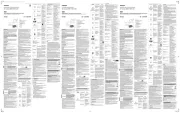
1 September 2025
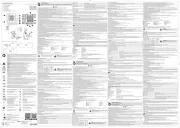
25 Augustus 2025
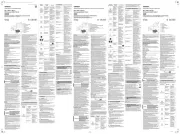
29 Juli 2025
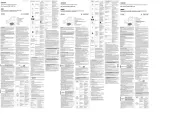
28 Juli 2025
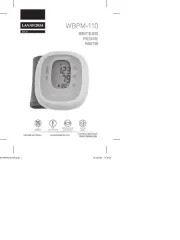
16 Juli 2025
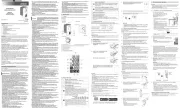
23 Mei 2025
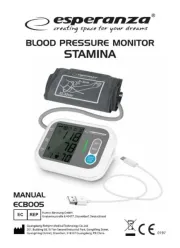
22 Mei 2025
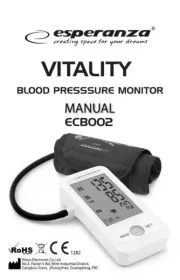
22 Mei 2025
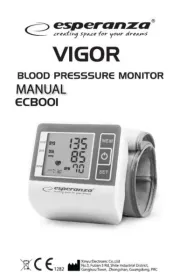
22 Mei 2025
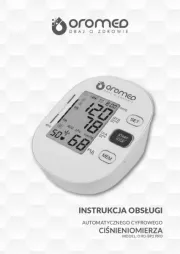
20 Mei 2025